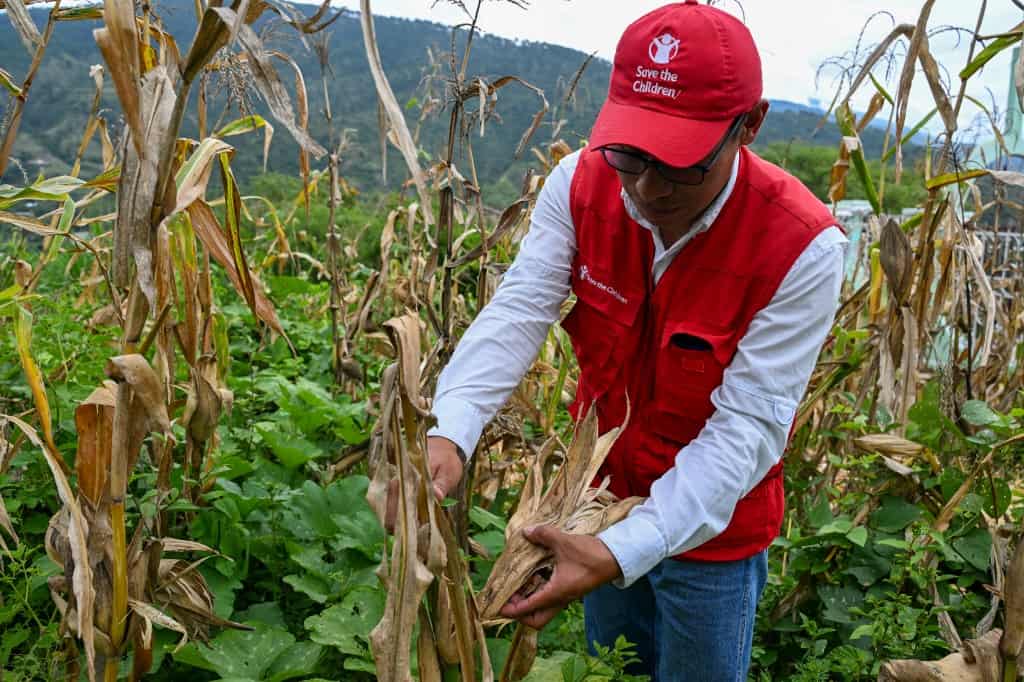In the village of San Pablo Las Delicias, in northern Guatemala, María Baten weeps over the lack of rain. “I have no water, I have nothing,” says this mother of five children in the Mayan language, as she wipes away her tears.
The drought threatens a food crisis in this area of Guatemala where the indigenous people learn to make the most of the scarce rain, preserving the moisture of the land where they mainly cultivate corn and beans.
“I envy people who have water, I really envy those people… What suffering!” said Baten, 36. International organizations consider Guatemala to be one of the 10 countries in the world most vulnerable to climate change, the effects of which drive tens of thousands of people to migrate to the United States every year.
Nestled between mountains, the department of Quiché is mostly inhabited by Mayan indigenous people who live in poverty.
The NGO Save the Children, active in the area through multiple aid programs, says that 3.5 of the nearly 18 million inhabitants of Guatemala are under threat of “an unprecedented food crisis” due to the lack of rain associated with climate change and the El Niño phenomenon.
The organization trains villagers in techniques to conserve soil moisture, such as digging ditches to filter water on slopes, and building barriers to prevent landslides.
These techniques “allow for soil conservation, achieve better irrigation” and teach communities to “care for their crops,” explains Alejandra Flores, interim director of Save the Children in Guatemala.
The rainy season used to run from May to October in Guatemala, but with the presence of El Niño in much of Central America, rainfall is now “quite irregular and deficient in some places,” says meteorologist César George.
Gift from the Lord
Villagers also receive training to produce fertilizers from herbs and a natural insecticide made from chili peppers and garlic.
Three out of five Guatemalans live in poverty, but the rate increases to four out of five in indigenous villages, where rains are vital for agricultural production and food.
Dressed in a colorful dress, Raymunda Itzol, from the Xecanap community, clears weeds from her small bean field. “There is no water here,” only the rain “that the Lord gives us,” she says.
Sitting on a bench, Francisco Carrillo, 87, shucks corn cobs in his rustic home in the same village. “There was no rain, and the harvest wasn’t good,” he says, separating the edible cobs from the rest. He will have to discard half.
Children get sick
In rural areas of Quiché, indigenous families live in precarious adobe houses, with tile or zinc roofs and no drinking water.
For years they have collected rainwater, from streams or what accumulates in wells dug in the ground. Sometimes the water is contaminated by animals, and when drunk, “children get sick,” says Tomasa Ixcotoyac, 40, as she draws murky water from a well with a bucket.
The NGO also teaches villagers how to purify water to avoid diseases. With plastic bottles on a table, trainers show the steps to add chlorine drops, and on a stove, they demonstrate that boiling indicates the water is drinkable.
Thousands of families also receive financial aid from the NGO – about 80 dollars a month for several months of the year – to buy food.
To face the drought, the Guatemalan government and the United Nations Food and Agriculture Organization (FAO) are implementing a 66.7 million-dollar plan to improve water capture systems.
The project aims to ensure the livelihood of 19,000 families in the Dry Corridor, an arid strip in northern Guatemala that also covers parts of Honduras, El Salvador, and Nicaragua and is vulnerable to extreme weather events.
The World Food Programme (WFP) also promotes in the area the harvest of vegetables such as carrots, radishes, tomatoes, and herbs that do not require much irrigation and reproduce in shorter periods. They also deliver fortified corn and bean seeds, explained the deputy director of the entity in Guatemala, Hebert López.
Fear of rain
Although the drought affects vast areas of Quiché, there are other areas of the region affected by storms that devastate homes and crops, whose virulence is also linked to climate change.
“When it rains, we are afraid,” says Ilsia López in the village of Sajubal, a Mayan area affected by hurricanes Eta and Iota in 2020, outside the Dry Corridor.
Bordered by cliffs and pine forests, it rains more here due to the high peaks. A recent bean harvest “rotted” due to excess moisture in the soil, says López, 31, showing the dry pods.
Central America and the Caribbean “is the region that suffers the most from the effects of climate change,” even though it “generates a tiny percentage of greenhouse gases,” President Alejandro Giammattei said last week at the UN General Assembly. “We suffer the most damage year after year.”






